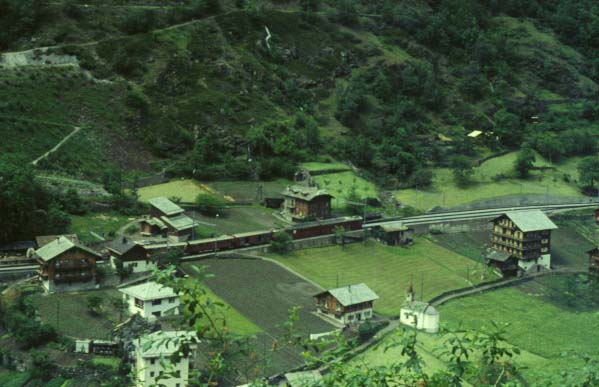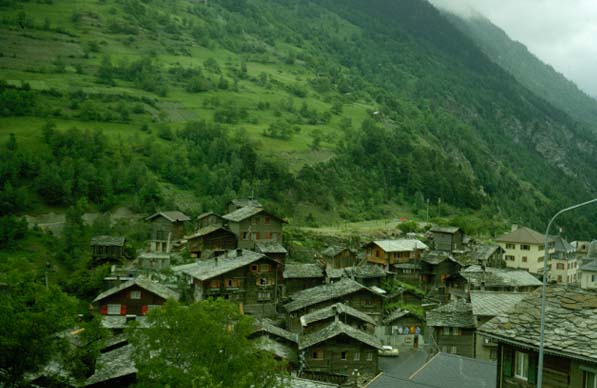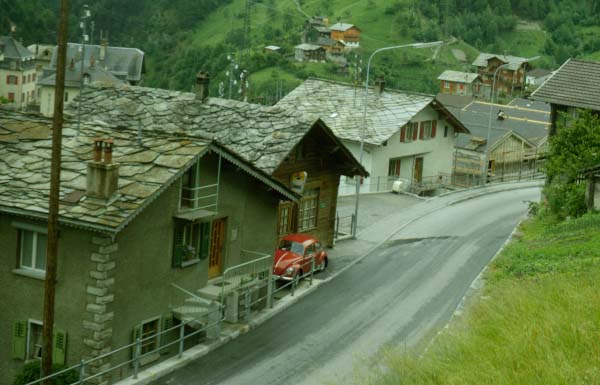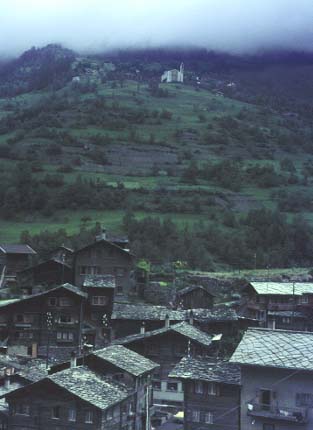Horse-drawn Vehicles in Zermatt

We caught the train to Zermatt at St. Nicklaus (It cost Sf 12.00 return from there compared to Sf20.20 from Visp). We climbed steadily and began to pass patches of snow. In meadows of wildflowers were many small shacks built of heavy timbers (at least 2x6 for siding). They had the stone roofs and had doors on two or three levels - evidently for use in the heavy snow season. They all looked deserted. They had no chimneys, so we wondered how they were heated.
The weather was terrible when we reached Zermatt and it grew steadily worse. It rained and cloud covered the valley, obscuring all the mountain views. The only thing we saw was the town with its shops. All conveyances in the town were either battery driven carts or horse drawn carriages. The fancy hotels had nice horse drawn carriages to take their patrons to and from the railway station. The horses had sleigh bells on and sounded cheery and Christmassy.
We got some excellent pastries at bakeries in Zermatt. Some more of the strawberry tarts and some "ladyfingers" with excellent pastry and creme filling.
At 12:45 there was no sign of the weather letting up so we caught the train back to St. Nicklaus. We bought groceries and spent the rest of the afternoon around camp - the weather was too bad for much else. June 8, 1967
Daily log



